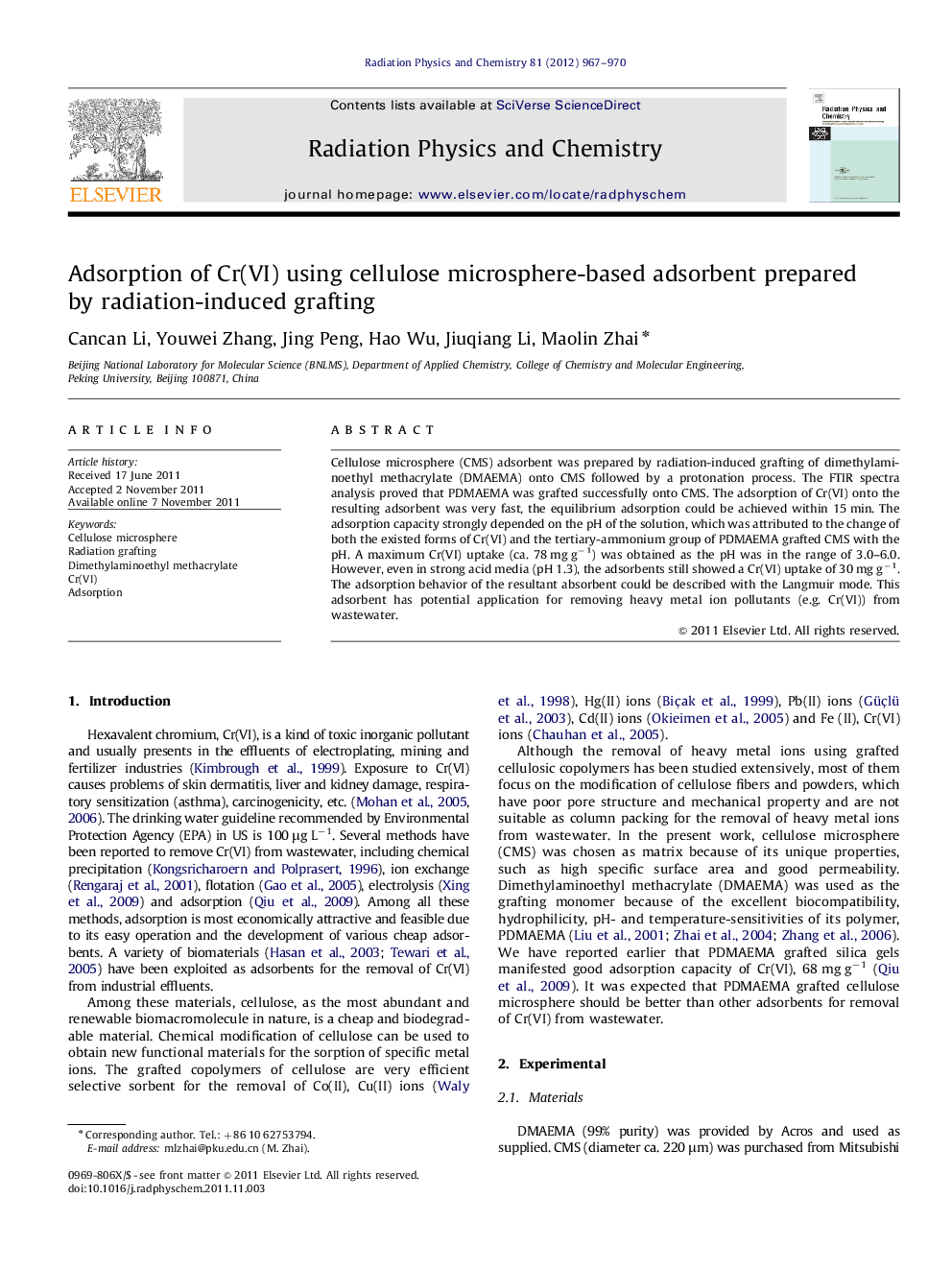| Article ID | Journal | Published Year | Pages | File Type |
|---|---|---|---|---|
| 1883937 | Radiation Physics and Chemistry | 2012 | 4 Pages |
Cellulose microsphere (CMS) adsorbent was prepared by radiation-induced grafting of dimethylaminoethyl methacrylate (DMAEMA) onto CMS followed by a protonation process. The FTIR spectra analysis proved that PDMAEMA was grafted successfully onto CMS. The adsorption of Cr(VI) onto the resulting adsorbent was very fast, the equilibrium adsorption could be achieved within 15 min. The adsorption capacity strongly depended on the pH of the solution, which was attributed to the change of both the existed forms of Cr(VI) and the tertiary-ammonium group of PDMAEMA grafted CMS with the pH. A maximum Cr(VI) uptake (ca. 78 mg g−1) was obtained as the pH was in the range of 3.0–6.0. However, even in strong acid media (pH 1.3), the adsorbents still showed a Cr(VI) uptake of 30 mg g−1. The adsorption behavior of the resultant absorbent could be described with the Langmuir mode. This adsorbent has potential application for removing heavy metal ion pollutants (e.g. Cr(VI)) from wastewater.
► A cellulosic adsorbent was successfully prepared by radiation grafting PDMAEMA onto CMS followed by protonation process. The max. grafting yield (GY) under the optimal condition was 33.3%. ► The resulting adsorbent possessed good adsorption capacity of Cr(VI). The equilibrium adsorption could be achieved within 15 min, which is very fast compared with other adsorbents (at least 2 h). ► The adsorption capacity strongly depended on the pH of the solution, a maximum Cr(VI) uptake (ca. 78 mg g−1) was obtained as the pH was in the range of 3.0–6.0. Even in strong acid media (pH1.3), the adsorbents still showed a Cr(VI) uptake of 30 mg g−1. ► The adsorption behavior of the resultant absorbent could be described with the Langmuir mode.
